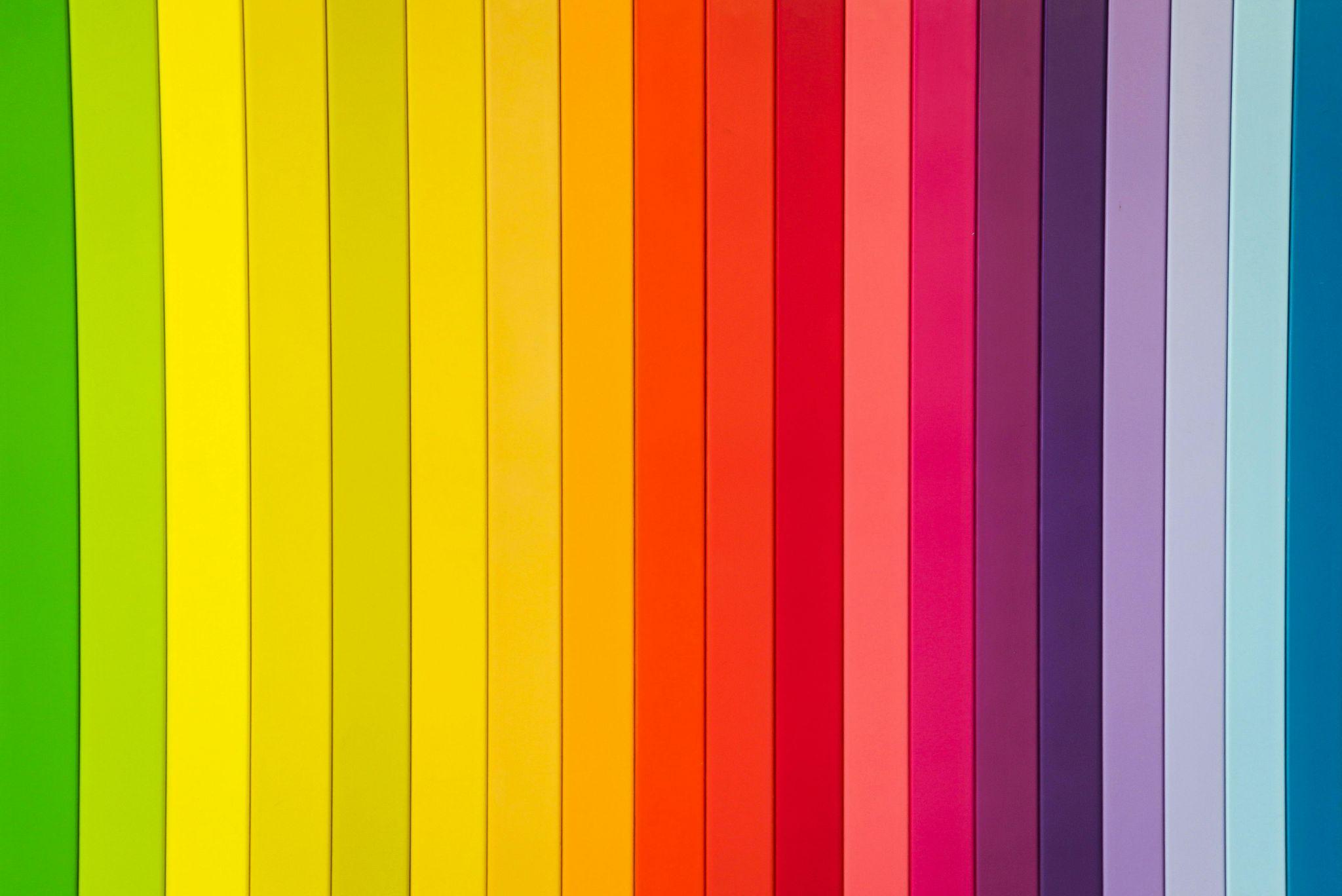Selecting the best color schemes for your website is one of the most critical decisions in web design. Colors shape first impressions, reinforce brand identity, guide user navigation, and trigger emotional responses that influence behavior. A well-chosen palette enhances readability, builds trust, and creates a cohesive visual experience across every page. In this guide, you’ll learn a structured, research-backed method to select harmonious, accessible, and strategically aligned color schemes that elevate both aesthetics and usability.
The Fundamentals: Color Theory & Psychology for Web Design
Before selecting colors randomly or copying competitor palettes, understanding the foundational principles of color theory ensures your choices are intentional and effective. Color theory provides a scientific framework for combining hues harmoniously, while color psychology reveals how different shades influence perception and behavior.
Color wheel, hue, saturation, lightness
Every color consists of three properties: hue (the actual color family like red or blue), saturation (intensity or vividness), and lightness (how light or dark the color appears). Understanding these components allows you to create shades (adding black), tints (adding white), and tones (adding grey) that maintain visual cohesion.
| HSL Value | Hue | Saturation | Lightness | Visual Result |
|---|---|---|---|---|
| hsl(210, 100%, 50%) | Blue | Full intensity | Mid-range | Vibrant blue |
| hsl(210, 50%, 50%) | Blue | Moderate | Mid-range | Muted blue |
| hsl(210, 100%, 75%) | Blue | Full intensity | Light | Pastel blue |
| hsl(210, 20%, 30%) | Blue | Low | Dark | Greyish navy |
Color harmony rules: monochromatic, analogous, complementary, triadic, tetradic
Color harmony creates visual balance through systematic color relationships. These proven schemes guide palette construction:
| Scheme | Relationship | Best Use Cases |
|---|---|---|
| Monochromatic | Variations of a single hue | Minimalist sites, portfolios, elegant brands |
| Analogous | Adjacent colors on the wheel | Nature-related sites, calming designs, gradients |
| Complementary | Opposite colors on the wheel | High contrast CTAs, energetic brands, sports |
| Triadic | Three evenly-spaced colors | Playful brands, creative agencies, children’s sites |
| Tetradic | Two complementary pairs | Complex sites needing diverse categorization |
Color psychology: emotional and cultural associations
Colors communicate subconscious messages that vary by cultural context. Strategic color choices align emotional responses with business goals:
- Blue: Trust, stability, professionalism (finance, healthcare, tech)
- Red: Urgency, passion, excitement (sales, food, entertainment)
- Green: Growth, health, nature (environmental, wellness, finance)
- Yellow: Optimism, warmth, attention (children’s products, food)
- Purple: Luxury, creativity, spirituality (beauty, premium brands)
- Orange: Friendliness, affordability, energy (retail, youth brands)
- Black: Sophistication, power, elegance (luxury, fashion, technology)
- White: Simplicity, cleanliness, modernity (minimal designs, healthcare)
Aligning Colors with Brand Identity & Audience
Your website palette must do more than look attractive—it needs to embody your brand personality while resonating with your target audience’s preferences and expectations. This alignment creates immediate recognition and emotional connection.
Defining your brand mood, personality, and desired emotional tone
Extract 3-5 adjectives describing your ideal brand perception, then map them to color directions:
- Bold, confident, authoritative → Deep blues, rich reds, charcoal blacks
- Playful, approachable, youthful → Bright oranges, teals, vibrant yellows
- Elegant, sophisticated, premium → Deep purples, gold accents, refined greys
- Calm, trustworthy, professional → Mid-tone blues, soft greens, clean whites
- Creative, innovative, unconventional → Unexpected combinations, saturated accents
Competitor and industry color research
According to Smashing Magazine’s analysis of color in web design, auditing competitor palettes reveals opportunities for strategic differentiation while understanding industry conventions.
| Competitor | Primary Color | Accent Color | Weakness | Opportunity |
|---|---|---|---|---|
| Competitor A | Navy blue | Orange | Generic, dated | Use modern teal |
| Competitor B | Green | Yellow | Low contrast | High-contrast alternative |
| Competitor C | Purple | Pink | Too feminine | Gender-neutral palette |
| Competitor D | Grey | Red | Lacks warmth | Warmer neutrals |
Audience preferences, demographics & color perception
Age groups show distinct color preferences: younger audiences favor saturated, bold colors while mature demographics prefer subdued, sophisticated palettes. Cultural context dramatically affects interpretation—white signifies purity in Western cultures but mourning in many Asian cultures. Always test palettes with representative users and ensure colorblind accessibility (affecting 8% of men and 0.5% of women).
Practical Steps to Build Your Website Palette

With theoretical foundations established, follow this systematic approach to construct a functional, beautiful color scheme.
Step 1: Choose a base (primary) color
Your primary color dominates the palette and anchors brand recognition. Select based on brand personality, industry expectations, and differentiation goals. This color typically appears in logos, primary CTAs, and navigation elements.
Step 2: Select secondary and accent colors
Add 1-2 secondary colors using complementary or analogous relationships. Apply the 60-30-10 rule: 60% primary/neutral, 30% secondary, 10% accent for CTAs and highlights. This distribution prevents visual chaos while maintaining interest.
Step 3: Add neutrals, backgrounds & text colors
Neutrals provide breathing room and enhance content readability:
- Backgrounds: Off-whites, light greys (not pure white—harsh on eyes)
- Surface layers: Slightly darker neutrals for cards, modals
- Text: Dark greys for body copy (pure black too stark)
- Borders: Subtle greys to define without overpowering
- Overlays: Semi-transparent darks for focus states
Step 4: Test contrast & accessibility
WCAG 2.1 guidelines require minimum contrast ratios for accessibility:
Accessibility Checklist:
- Normal text: 4.5:1 contrast ratio minimum
- Large text (18pt+): 3:1 contrast ratio minimum
- UI components: 3:1 against adjacent colors
- Test with WebAIM Contrast Checker
- Verify in colorblind simulators (Protanopia, Deuteranopia, Tritanopia)
Step 5: Iterate, test with users, and refine
- Create mockups with your palette applied to key templates
- Test on actual devices (mobile, tablet, desktop) under various lighting
- Gather user feedback through surveys or preference tests
- Run A/B tests on CTAs with color variations
- Simulate accessibility conditions using browser tools
- Document learnings and adjust palette systematically
Best Practices & Mistakes to Avoid in Website Color Design
Expert designers follow proven principles while avoiding common pitfalls that undermine otherwise solid palettes.
Limit your palette—don’t overuse colors
Restrict your scheme to 3-5 colors maximum (including neutrals). More colors create visual noise, weaken brand recognition, and overwhelm users. Every color should serve a specific purpose.
Maintain visual hierarchy and consistency
Strategic color assignment guides user attention and creates intuitive navigation:
| UI Element | Ideal Color Usage | Rationale |
|---|---|---|
| Primary CTAs | Accent color | Maximum contrast, draws action |
| Secondary buttons | Outlined or secondary color | Clear but less prominent |
| Navigation | Primary or neutral | Consistent, unobtrusive |
| Headings | Primary or dark neutral | Establishes hierarchy |
| Body text | Dark grey (not black) | Readable, comfortable |
| Links | Primary or accent | Recognizable, clickable |
| Alerts/Errors | Semantic colors (red, yellow) | Universal recognition |
Mind color contrast on different devices and lighting
Test your palette on actual hardware—not just design software. Colors appear differently on OLED vs LCD screens, and ambient lighting dramatically affects perception. Implement dark mode alternatives where appropriate.
Don’t rely on color alone to convey meaning
Combine color with icons, labels, or patterns to ensure colorblind users can interpret information. Never use color as the sole differentiator for critical actions or data visualization.
Beware of trendy color palettes without relevance
Chasing design trends produces short-lived palettes that may clash with your brand identity or fail accessibility standards. Choose timeless combinations aligned with brand values over fleeting aesthetics.
Tools & Resources to Help You Choose Website Color Schemes
Modern tools accelerate palette creation while ensuring technical accuracy.
Interactive palette generators & color wheels
- Coolors.co: Generate schemes with spacebar, adjust individual colors, export multiple formats
- Adobe Color: Explore harmony rules, extract colors from images, browse community palettes
- Paletton: Simulate colorblind vision, fine-tune brightness/saturation
- Khroma: AI-powered generator learns your preferences
Contrast checkers & accessibility validators
| Tool | Features | Best For |
|---|---|---|
| WebAIM Contrast Checker | WCAG ratio calculation, pass/fail | Quick validation |
| Stark | Plugin for design tools, colorblind simulation | Integrated workflow |
| Accessible Colors | Suggests nearest accessible alternative | Fixing failures |
Inspiration galleries, design system references & open palettes
Browse curated collections at Dribbble Color Search, study Material Design color systems, or explore Open Color for pre-built accessible palettes.
Applying Your Color Scheme Across Your Website Design
Consistent application transforms your palette from concept to cohesive user experience.
Establishing a style guide / design system
Document HEX/RGB codes, usage rules, and component mappings in a central style guide. Include do’s and don’ts with visual examples to ensure team-wide consistency.
Mapping colors to UI elements & content types
Assign colors systematically: primary for brand moments, secondary for categorization, accent for conversion points, neutrals for structure. Every color should have defined contexts.
Managing consistency across pages, states, and interactions
Define hover states (typically 10-15% darker), active states, disabled states (reduced opacity), error/success colors, and dark mode variations. Consistency builds intuitive interfaces.
Scaling and extending your palette when needed
Add tints and shades of existing colors before introducing new hues. Create systematic shade scales (50-900) for each primary color to maintain harmony while expanding options.
Conclusion
Choosing the best color schemes for your website requires balancing artistic intuition with scientific principles, brand strategy with user accessibility, and creative expression with practical usability. By grounding decisions in color theory, aligning with brand identity, following systematic selection steps, and testing rigorously for accessibility, you’ll create palettes that don’t just look beautiful—they perform strategically. Remember that effective color schemes evolve through iteration and user feedback, so treat your initial palette as a starting point for continuous refinement. A thoughtful, well-executed color strategy strengthens brand recognition, enhances usability, and builds the visual trust that converts visitors into loyal users.

